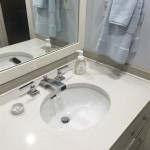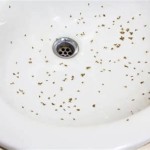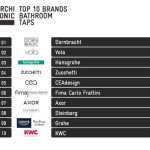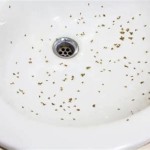Brushed Nickel vs. Chrome: The Ultimate Guide for Your Bathroom
Choosing the right finish for bathroom fixtures can significantly impact the overall aesthetic. Two of the most popular choices are brushed nickel and chrome. While both offer a sleek, modern look, they possess distinct characteristics that cater to different design preferences and practical needs. Understanding these differences is crucial for making an informed decision that complements your bathroom's style and stands the test of time.
Appearance and Finish
The most immediate difference between brushed nickel and chrome lies in their appearance. Chrome boasts a highly reflective, mirror-like finish that adds a touch of glamour and brilliance to any bathroom. Brushed nickel, on the other hand, features a matte finish with subtle brushing marks, creating a softer, more understated look.
Durability and Maintenance
Both brushed nickel and chrome are known for their durability and resistance to corrosion. However, their maintenance requirements differ slightly. Chrome's smooth surface makes it easy to clean and less prone to showing water spots and fingerprints. Brushed nickel, while also relatively easy to clean, can sometimes show fingerprints and water spots more readily due to its textured surface. Regular cleaning with a mild soap and water solution is recommended for both finishes.
Cost Considerations
Generally, chrome fixtures tend to be more budget-friendly than brushed nickel. The manufacturing process for chrome is typically less complex, leading to lower production costs. While brushed nickel offers a more premium aesthetic, this often comes at a slightly higher price point.
Style Compatibility
Chrome's bright, reflective finish complements a wide range of bathroom styles, from contemporary and minimalist to traditional and even vintage. Its versatility makes it a safe and popular choice for homeowners. Brushed nickel, with its warmer, more understated tones, works particularly well in transitional, farmhouse, and industrial-style bathrooms. It also pairs well with natural materials like wood and stone.
Resistance to Tarnish and Wear
Both chrome and brushed nickel are resistant to tarnish and wear, ensuring their longevity in the humid bathroom environment. Chrome's non-porous surface makes it highly resistant to rust and corrosion. Brushed nickel, while slightly more susceptible to showing wear over time, still offers excellent durability and resistance to tarnish, especially when coated with a protective lacquer.
Undertones and Warmth
Chrome’s bluish-silver undertones lend a cool, crisp feel to the bathroom. It reflects light effectively, creating a brighter and more spacious atmosphere. Brushed nickel, with its warmer, slightly yellowish or grayish undertones, offers a more inviting and cozy ambiance. This warmth can be particularly appealing in bathrooms with neutral color palettes.
Installation and Compatibility
Both brushed nickel and chrome fixtures are readily available and compatible with standard plumbing systems. Installation processes are typically similar for both finishes, making them equally convenient choices for bathroom renovations or new builds.
Coordinating with Other Fixtures
When choosing between brushed nickel and chrome, it's essential to consider the existing or planned finishes of other bathroom elements. Ideally, all fixtures, including faucets, showerheads, towel bars, and light fixtures, should have a consistent finish for a cohesive and polished look. Mixing finishes can create a disjointed appearance unless done intentionally and with careful consideration.
Long-Term Value and Resale Appeal
Both chrome and brushed nickel are considered timeless finishes that maintain their appeal over time. While trends in bathroom design may evolve, both finishes offer classic aesthetics that are unlikely to become dated quickly. This contributes to their long-term value and can positively impact resale appeal.
Cleaning Tips for Brushed Nickel and Chrome
Maintaining the pristine appearance of both brushed nickel and chrome requires proper cleaning practices. Avoid abrasive cleaners and scrubbing pads, as these can scratch the surface. Instead, opt for a soft cloth or sponge and a mild soap and water solution. For stubborn water spots or fingerprints, a solution of white vinegar and water can be effective. Regularly wiping down fixtures after use can also help prevent the buildup of grime and maintain their shine.
Considering the Bathroom Size and Lighting
The size and lighting of your bathroom can influence how each finish appears. In smaller bathrooms, chrome's reflective qualities can help create an illusion of spaciousness. In larger bathrooms, brushed nickel's subtler finish can add a touch of warmth and prevent the space from feeling too sterile. Natural light can enhance the warmth of brushed nickel while also accentuating the shine of chrome. Artificial lighting can also impact how each finish appears, so it's important to consider this factor when making your decision.

Brushed Nickel Vs Chrome 6 Key Differences For Kitchens And Bathrooms

Brushed Nickel Vs Chrome Learn The Difference Choose Right Faucet Finish
Brushed Nickel Vs Chrome Learn The Difference Choose Right Faucet Finish

Brushed Nickel Vs Chrome Comparison Guide To Learn The Difference
Brushed Nickel Vs Chrome Learn The Difference Choose Right Faucet Finish

Brushed Nickel And Chrome Which Is The Better Bathroom Faucet

Chrome Vs Brushed Nickel Stainless Steel Kitchen Hardware

Brushed Nickel And Chrome Which Is The Better Bathroom Faucet

What S The Difference Chrome Brushed Nickel Bob Vila

Bathroom Faucets Brushed Nickel Vs Chrome Wowow
Related Posts







